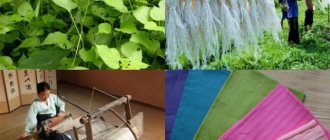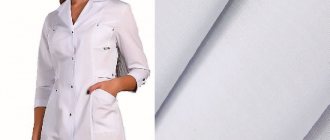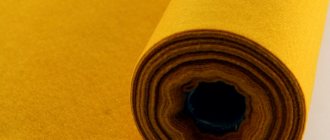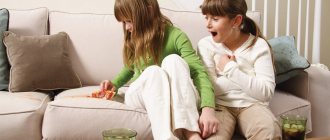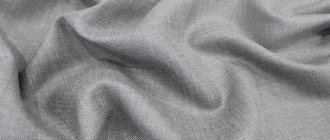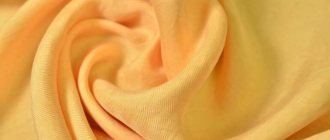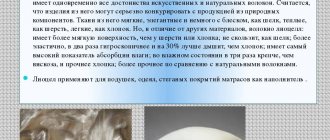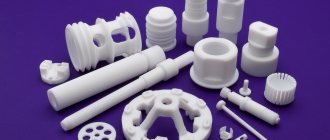"Velvet" story
This is a very ancient fabric, which was known back in the 3rd century BC. The Chinese were the first to produce luxurious fabrics. In the 8th-9th century it migrated to Byzantium. And in the 13th century, Italy became acquainted with velvet and fell in love with it to such an extent that in 1247 the weavers of Venice and Genoa united and created a joint guild for the production of this elite fabric. Italian velvet began to gradually spread throughout Europe. They took him through Novgorod along the northern route and to Rus'. But they rarely bought fabric. Usually traded for hemp or furs. Own production in Russia began only in 1623, when the Velvet Court was created. German merchants shared technology with Russian weavers.
The name of the fabric has German roots. In Germany it was called barchent. The word was adapted to the Russian language and turned into “velvet”.
The high status of textiles is evidenced by the paintings of painters. Charles VII, Napoleon Bonaparte, Elizabeth I are depicted in portraits in velvet outfits that look expensive and chic. In Russia, the royal chambers were decorated with scarlet velvet. And in France they even wanted to ban it in 1543. Due to the high cost of the material, the richest nobles went bankrupt on its purchases. However, even exorbitant prices could not prevent the victorious march of velvet across countries and continents.
In Russia, after the overthrow of the autocracy, the painting was forgotten and its popularity fell somewhat. But in the 60s of the twentieth century, the fashion for soft, iridescent material was revived by the legendary group the Beatles. With the light hand of the Liverpool Four, velvet regained its former glory and never lost it again. Thanks to automation of the production process and synthetic additives, the fabric has become cheaper and today is available to everyone.
Texture Features
The dense material has a complex texture. This is explained by production technology. It is made using 5 threads. 4 create the base, and the 5th forms a pile up to 5 mm long. But only the front side is fleecy. The inner surface remains smooth. The tactility of the fabric is heterogeneous. It can be smooth or rough. It all depends on additional processing in production.
The highlight of velvet is its rainbow tints, which enhance its aesthetics and charm. Changing lighting makes the fabric look different and shine with a subdued shine. The fabric also shimmers when you move, so in velvet suits or dresses you will always look festive, elegant, and unusual.
It is the texture features that are “to blame” for the appearance of many phraseological units. Velvet skin (delicate), velvet season (warm), velvet revolution (soft, bloodless).
General characteristics
Among other fabrics, velvet quickly became popular due to the following characteristics:
- special softness due to the presence of pile on one side of the material;
- pile length – up to 5 mm;
- dense texture;
- a texture in the form of loops or such as is formed by cutting two fibers woven at the same time;
- the ability to shimmer in the light.
When velvet first appeared, it was made from silk; today such fabric is rare due to its high cost, but you can choose velvet fabrics with the addition of wool, cotton or synthetic fibers to suit every taste. The quality of velvet depends on its composition - synthetic and combined fabrics are inferior to natural ones and look less elegant.
Velvet can be decorated and colored in several ways:
- printing of designs (printed velvet);
- embossing (laying the pile in the form of a pattern and then fixing it with a hot press);
- embroidery (manual or using computerized machines).
Advice
Choose clothes made of velvet with a minimum number of seams: flaws in the work of tailors are very visible on this fabric.
Making velvet
There are 2 production methods:
- Split. 2 canvases are connected to each other with an additional thread, which is subsequently cut. The result is a shaggy, fuzzy top and a smooth, soft underside.
- Looped. First, the fabric is knitted using special equipment, and then loops are pulled out of it and cut. It also produces a dense, delicate fabric with iridescence.
Today, textiles are produced by many foreign manufacturers. Raymakers (Netherlands) offers plain velvet in a variety of shades. Gierlings Velpor (Portugal) is considered the best manufacturer of jacquard material with a natural composition. At Rekor (Türkiye) you can find canvases with a degradation effect. The Italian Gross supplies mainly upholstery fabric - with embroidery, prints, pleated.
Fabric decoration technologies
Initially, the royal fabric was only one-color. Even without patterns, she looked status-conscious and impressive. But the modern textile industry has stepped far forward, which allows decor to be applied in different ways. Among them:
- printing: the design is applied to the surface using printing;
- embossing: the pile is laid out in different directions, after which the layout is secured with a hot press;
- embroidery: created by program-controlled embroidery machines;
- patterned weaving: combine different types of fiber weaving, obtaining unusual relief and patterns;
- etching: individual threads are dissolved with chemical compounds, which creates beautiful textured effects;
- indentation: processing of individual areas with special brushes. As a result, an ornament remains on the surface, as if pressed in.
Decor can also be created using fittings. The cost of printed, patterned material is higher than its plain counterparts.
What does flocking give?
Flocking is an innovative technology often used for decorative finishing of materials. The process involves velvet spraying, creating a fleecy surface. Moreover, you can apply fluffy pile not only to fabric. Flock improves the aesthetics of leather, plastic, wood, glass, paper.
Spraying can be continuous or selective. The flock is based on polyamide or viscose, so this type of pile can be easily distinguished from natural one.
Flocking is not only a decorative tool. It also improves quality characteristics - thermal insulation, mechanical strength. Products treated with flock remain unchanged in color for 6-7 years, and the ignition temperature increases to 400-550 degrees.
What type of fabric is this?
Velvet is a dense double-sided material on a silk or cotton base: with a fleecy and dense structure on the front side and smooth on the back. The main feature is that the pile shimmers depending on the light hitting it.
Types of velvet
Silk is used to make the material. The process is quite labor intensive. The base in two layers was tied with one thread, so things made of velvet weighed a lot. Nowadays, unnatural threads are added to the composition during production - polyester and viscose. Synthetics weigh and cost several times less than natural ones, so mixed threads make things that are not heavy and inexpensive.
Silk
Fame and luxury: a detailed review of silk fabric
more details
There are several production options. With looping, to obtain pile, loops are made from the material and cut to form microscopic tassels.
The second method is split. In this case, the warp is woven and joined with the 5th thread. Fabrics similar to velvet are made using the flocking method: a base is covered with a special glue, on top of which short fibers are applied to form a coating. To evenly distribute the particles on the surface, a special device is used. The flocator charges the fibers with static electricity and directs them to the adhesive base.
In addition to factories in Russia, the material is also produced abroad. Among the leaders is the Netherlands, where plain velvets of various densities and textures are woven. India, Italy, Bulgaria and China are also famous for their materials.
Catalog of fabrics made from artificial fibers
Types of velvet
Refined material is heterogeneous. There are 3 large groups, which include many subspecies. The criteria for dividing into groups are composition, types of fabric textures, and areas of application.
By composition
Depending on the raw materials used, velvet can be:
- Silk. The matte shine gives the delicate, flowing fabric a special charm.
- Cotton. Dense, even a little rough visually, but very soft in feel.
- Synthetic. It can be recognized by its glossy shine. Marble velvet, which contains polyester and elastane, is especially valued. It gives beautiful optical effects when lighting changes. It does not look flashy, but strictly and restrained. Therefore, clothes made from it, like from suit crepe, are suitable for any age.
- Mixed. Synthetic fibers are added to natural fibers. The stretch with elastane received good reviews. This look is often chosen by young people. Thanks to the additive, outfits are tight-fitting and beautifully highlight the contours of the body.
For a long time, velvet was made only from silk, which is why it was incredibly expensive. Today in the premium segment you can find completely silk analogues. For example, from the Indian manufacturer ZENITH. But more often other fibers are chosen for production.
There is a natural product that contains palm leaves and bark. This is Kasai velvet. It is produced only in the Republic of Congo. The decorative qualities of such textiles are high, so they are usually used for sewing bedspreads.
By fabric
Velvet fabrics differ in production technique, tactility, and appearance. There are many types of fabric, and new ones continue to appear. Today the textile industry offers:
- chiffon: considered the lightest type, with a translucent thin base and constant shimmer;
- bagheera: on the contrary, very dense textiles, with a slightly rough surface. But some roughness does not prevent evening jackets and dresses made from bagheera from looking luxurious and expensive;
- Lyon: perhaps the heaviest of all varieties. Hard, dense, with synthetic threads in the composition. Often used when sewing curtains;
- sisel: distinguished by its looped structure, which is clearly visible upon examination;
- eraser: a distinctive feature is a longitudinal scar. The pliable fabric drapes well;
- mother of pearl: made from threads of silk of different colors. It is characterized by magical shimmer and bright tints;
- moire (or crash): has piles of different lengths, which explains the visual effect of a slight bruise;
- devore: silk base with viscose pile. The production uses etching, which results in unusual patterns;
- trip: uncommon. The base is made of wool fibers. Outerwear is usually made from tripe;
- stretch: the presence of elastic additives allows the material to stretch well and restore its original shape.
Pleated velvet, which undergoes additional processing, is also popular. A characteristic feature of pleated fabric is its accordion texture (small folds). This material is suitable for skirts, blouses, sundresses. It drapes well, emphasizes natural curves, but is quite heavy.
By application
Velvet is also divided according to the purpose of use.
| View | Peculiarities |
| Costume and dress | To increase elasticity, spandex and lycra are added. For the production of clothing, medium-density material is chosen. |
| Curtain | The fabric is dense, which provides good shading. The width varies from 1.5 to 3 meters. Impregnated with compounds against rapid fading in the sun. |
| Furniture | Used for upholstery. May have patterns. The synthetic composition provides wear resistance. Treated with special water-repellent solutions. |
Kinds
Classic plain velvet will never go out of style. To increase demand, weaving industries are finding a way to draw the attention of designers to an expanded range of fabrics and push them to create original clothing models.
Types by composition
Velvet is made from almost all fibers, both natural, synthetic and mixed.
- Cotton - soft and dense.
- Silk is delicate, has a noble matte shade.
- Synthetic - has a glossy shine, some types are found with stretch.
- Blended - polyester fibers are mixed with natural ones in different proportions.
Types by fabric
In recent years, quite a few varieties have been created:
Chiffon-velvet is a lightweight material with a translucent base and a velvety pattern.
bagheera - thick fabric used for sewing evening dresses;
An eraser or semi-velvet, resembling a longitudinal rib, is made from natural silk. Often a synthetic thread is added to its base;
Sisal velvet - uncut looped pile;
Corrugated is a striped, embossed fabric.
Velvet moiré (crash) – characterized by different lengths of pile, which gives a crumpled effect.
Devore is a light silk fabric with jacquard patterns.
Stretch velvet is a stretchable fabric containing spandex or lycra fibers.
Lyon - dense and weighty. Contains synthetic threads.
Velvet mother-of-pearl is made from natural silk. The warp and weft threads are taken in different shades or even colors.
Types by application
- Suit-dress - has a medium density, may contain spandex threads, which provides elasticity.
- Curtain - dense fabric with a width from 1.5m to 3m.
- Furniture is a more wear-resistant material, composed of polyester.
Advantages of the material
The popularity of the material was ensured by:
- softness: delicate pile is pleasant to the body, does not prick;
- wear resistance: the dense texture is not subject to snags; with proper care, abrasions and bald spots do not appear on the front side;
- dimensional stability: the material does not stretch, the sleeves do not sag;
- aesthetics: the material has long been recognized as an indicator of status.
Artificial textiles have a bright shine and impeccably even pile. Natural velvet also shimmers. But its shine resembles shimmer - matte and muted.
Flaws
Along with admiration, velvet sometimes causes discontent. Noble fabric requires special treatment. Its fibers attract dust, and without proper care, the products will look sloppy and untidy. Improper ironing can disrupt the structure of the pile, which will also reduce the attractiveness of the material.
If the canvas is not treated with special impregnations, it quickly fades in the sun: its shine is lost and the color becomes dull. In addition, the dense material takes a long time to dry.
Areas of application
Velvet cannot be called an everyday material. It is used on special occasions, serves to decorate the interior, decorate, and create a rich environment. These features of textiles determined the scope of its use. Sew from fabric:
- Clothing for men and women: jackets, jackets, trousers, coats. For this purpose, cotton and wool analogues are mainly used. Silk is less common because it is very expensive.
- Shoes: it is recommended to wear them only indoors. This is an evening option. Velvet decor is often found in the decoration of shoes and boots.
- Accessories: a handbag or gloves to match the sandals will add aristocracy to the look. Berets and velvet hats are popular.
- Home textiles: curtains, tablecloths, decorative pillows, and bedspreads will add gloss to any interior.
- Furniture upholstery: wear-resistant due to additional processing. We also produce festive covers for chairs and poufs.
- Theatrical costumes and scenery: velvet, like no other, can convey the atmosphere of past eras and create a feeling of celebration.
- Jewelry cases: jewelry in a velvet box seems to look more elegant and sparkle brighter
The canvas is also used in painting. They paint on it with oil paints. Such paintings have a special glow from within, and the image, depending on the viewing angle, can change.
Velvet analogues
The modern market offers many alternative materials that are similar in structure to velvet.
It is worth highlighting the most popular options:
- Plush - has a high pile.
- Velor - made from cotton and artificial fibers.
- Stretch velor is an elastic fabric that is used for tight-fitting and sportswear.
The difference between velvet and plush
The difference between velvet and velor
The difference between velvet and stretch velor
Cotton and wool velor deserve special attention. The fabric is decorated with printed patterns and original elements. Velor is used for upholstery of upholstered furniture.
A product made of high-quality and noble fabric will decorate any wardrobe or interior. With proper care, velvet items will delight their owner with an elegant appearance for a long time.
Rules for choosing royal material
To avoid disappointment with your purchase, you need to:
- correctly calculate the fabric consumption. For simple styles, it is advisable to buy 20% more. For complex ones – by 40%. Consumption increases due to the need to observe the direction of the pile;
- take into account the intended purpose. 100% cotton is not used for clothing due to its roughness. But it is suitable for collars, valves, cuffs. Mixed velvet will produce products with soft folds. Chiffon or velvet coated items are good for evening wear;
- carefully examine the canvas. If creases and abrasions are visible on it, then it is a defect.
The price depends on the composition. The cost of cotton velvet is about 500 rubles per meter. Silk - can reach up to 1500 per meter. The cheapest is synthetic. Some types cost 150-200 rubles.
Sewing features
Velvet is quite difficult to work with. All cut details must have the same pile direction. Before sewing, you need to install a new needle. Be sure to be thin - No. 70 or No. 80. For elastic material, a needle with a rounded end is required so as not to disturb the structure of the fibers. Stitch length – no more than 2.5 mm. When working with collars and cuffs, it is better to use thin duplerin. This way they will not stretch and will retain clear contours for a long time.
All defects and errors are clearly visible on the velvet surface. Therefore, it is better to avoid complex seams.
In addition to classic velvet fabrics, you can buy in stores:
- Plush - high-pile fabric
- Velor is a denser, more practical material.
- Panvelvet is velvet with a pattern obtained by changing the direction of the pile.
- Silk velvet devore patterns, obtained through special chemical processing, become a source of fashion inspiration
- Exclusive velvet is embroidered with sequins, rhinestones, and decorated with embroidery and appliqués.
TISSURA salons offer branded velvet fabrics from leading European manufacturers. On sales days you can buy velvet at very competitive prices. Online sales are carried out on the website
Velvet and similar fabrics
Velvet is often confused with other pile fabrics, but there are differences between them.
| Criteria | Velvet | Velours | Velveteen | Plush | Panne |
| Texture | With short pile up to 5 mm | Softer than velvet, with longer pile - up to 8 mm | In addition to the pile, scars are clearly visible. | The pile can be double-sided. It is less thick than velvet, but long - up to 9-16 mm | Soft, with angled pile and textured pattern |
| Compound | The classic option is silk. | 70-80% natural fibers (cotton, wool). 20% accounts for artificial threads | The basis is made of cotton threads | The base is cotton, and the pile can be cotton, wool, silk, polyester | Natural silk |
| Characteristics | Wrinkles, density, antistatic, requires careful care. | Almost does not wrinkle, easy to care for. | Shrinks. When synthetics are added, it accumulates static electricity. | Does not wrinkle, has a high degree of color fastness. | The texture is thinner than velvet, but more voluminous due to the relief pattern. It can be bielastic or elastic only along the pepper thread. |
In England, velvet is called velvet, and in France - velours, but these are different types of fabric, and their characteristics are not similar to each other.
Difference from velor, corduroy and plush
There are fabrics with pile, similar to velvet - plush, velor and corduroy. They differ in the composition and length of the pile, as well as in the manufacturing technique.
- Velor is produced by cloth spinning. This is a more durable fabric with a long pile. Velor may contain cotton, wool or synthetic fiber.
- Corduroy is a fabric with thick short pile and ridges on the surface. The material is durable, made of cotton fiber. Stretches better than velvet.
- Plush is a soft material with long pile. Three threads are used in weaving. Plush is made from cotton, silk or wool.
Nuances of care
Velvet fabric is quite capricious. But if you follow simple rules, it will last for many years without losing its original appearance and basic characteristics. Among the main recommendations:
- It is not advisable to wash natural textiles. It is better to take it to the dry cleaner. For synthetic varieties, washing is allowed. But this must be done manually, at a temperature not exceeding 40 degrees.
- Do not twist the fabric. It is lightly wrung out by hand and hung on hangers, allowing the water to drain.
- Products can be dried flat on a horizontal surface. To make the moisture evaporate faster, the velvet is wrapped in a cotton towel.
- Iron pressure and horizontal ironing can irreparably damage the pile. It is best to iron things vertically using steam.
- Store velvet items on hangers. To prevent them from fading and collecting dust, it is recommended to use breathable covers.
The popularity of velvet is quite natural. After all, it radiates sophistication and nobility, looks elegant and aristocratic.
Complex, muted shades are popular this season: marsala, cobalt blue, dark plum, wine, graphite. Black remains timeless and fashionable. Printed velvet is more suitable for autumn and winter. It makes stylish men's and women's suits, jackets, jackets.
